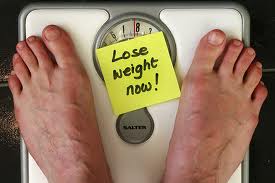In the age of The Biggest Loser, countless commercial diets and exercise programs and surgical weight loss procedures I have concerns that as a society we are losing sight of healthy sustainable weight loss.
Most people gain weight at a slow and steady pace over time and the best way to reverse that gain is to create goals and a plan that results in a slow and steady loss.
Sustainable weight loss goals should be based on losing a maximum of 2 pounds per week.
Did you know that one pound of fat is equivalent to 3500 calories? That means if your goal is to lose 2 pounds in a given week you have to create a 1000 calorie deficit every day to reach your goal.
Caloric deficits are created through limiting your caloric intake combined with your caloric expenditure through physical activity. These things go hand-in-hand and you need to incorporate both of them to achieve sustained weight loss.
If you think you can just create a caloric deficit by just cutting calories you will likely run into two things:
1) If you aren’t consuming enough calories your body will begin to hoard everything you take in to prevent you from starving – as a result this slows your metabolism and weight loss suddenly becomes much more difficult
2) Your will power to severely limit your caloric intake is difficult to sustain and has the potential to result in binge eating episodes
Pairing physical activity with reduced caloric intake can ultimately bring about better results because:
1) As you build lean muscle and lose body fat your metabolism increases (muscle is a metabolic tissue), which supports better weight loss and management
2) You are not totally dependent upon your intake to create the deficit
Now that you know what it takes to lose a pound can you see why it’s not only unrealistic but dangerous to think about losing 5 pounds, 10 pounds or more in just one week?